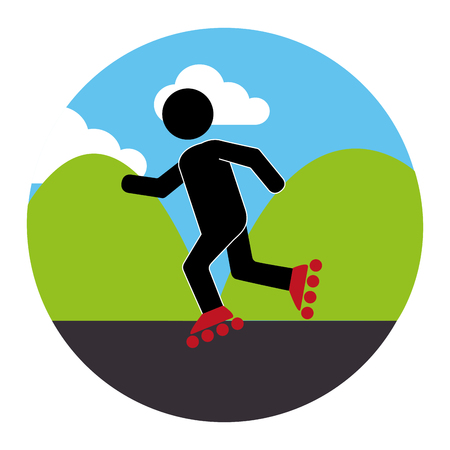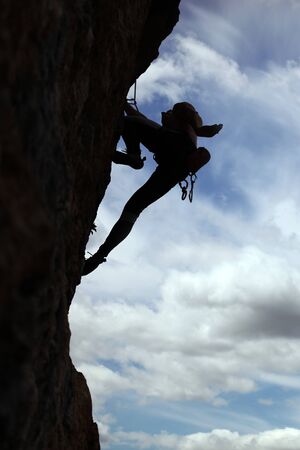Introduction to Trail Etiquette in the U.S.
If youve ever laced up your boots and hit the trails in the United States, youve probably noticed that hiking isnt just about beautiful views and fresh air—its also about sharing the path with others. Understanding who has the right of way on American hiking trails is a key part of trail etiquette. Not only does it help keep everyone safe, but it also makes the experience more enjoyable for everyone out there.
Right of way might sound like something youd hear while driving, but it matters just as much when youre walking through a national park or exploring local trails. With hikers, bikers, horseback riders, families, and even pets using the same paths, knowing who yields to whom can prevent accidents and misunderstandings.
Why Right of Way Matters
Imagine coming around a bend and suddenly facing a group of mountain bikers speeding downhill or a line of horses making their way up a steep section. Without clear rules for who steps aside, things could get confusing—or even dangerous. Thats where trail etiquette comes in. By following these unwritten (and sometimes written) rules, everyone can move safely and smoothly along the trail.
The Benefits of Good Trail Etiquette
- Safety: Prevents collisions and injuries
- Respect: Shows consideration for fellow trail users and wildlife
- Smoother Traffic: Keeps traffic flowing naturally, especially on narrow or crowded paths
- Positive Vibes: Builds a friendly outdoor community where everyone feels welcome
Common Trail Users and Why Etiquette Is Needed
| User Type | Potential Challenges | Importance of Right of Way |
|---|---|---|
| Hikers | Narrow trails, varying speeds | Avoids congestion and confusion |
| Bikers | Higher speed, less maneuverability uphill/downhill | Keeps everyone safe and prevents accidents |
| Horseback Riders | Easily startled animals, need space to pass safely | Prevents injury to both people and animals |
| Families with Kids or Pets | Unpredictable movements, slower pace | Makes sure everyone has an enjoyable time outdoors |
In short, knowing the basics of trail etiquette—and especially who should yield to whom—helps make hiking in America safer and more fun for everyone. In the next sections, well break down exactly how these right-of-way rules work on U.S. hiking trails so you can hit the path with confidence.
2. Who Yields: Hikers, Bikers, and Equestrians
When you hit the trail in the U.S., it’s important to know who should yield to whom. This helps keep everyone safe and makes the outdoor experience enjoyable for all. Whether you’re hiking, biking, or riding a horse, there’s a common right-of-way hierarchy followed on most American trails.
The Standard Right-of-Way Hierarchy
The basic rule of thumb is simple: horses have the most priority, followed by hikers, then mountain bikers. Here’s how it typically breaks down:
| Trail User | Yields To |
|---|---|
| Biker | Hiker & Horseback Rider |
| Hiker | Horseback Rider |
| Horseback Rider | No One (has the right-of-way) |
Why This Order?
This order isn’t random—it’s about safety and practicality. Horses can be easily startled, so it’s best for everyone else to give them plenty of space. Hikers are more agile than bikers, but less predictable than horseback riders. Mountain bikers move fast and can stop or maneuver more easily than horses or hikers, so they’re expected to yield more often.
Quick Reference for Encounters
- Biker meets hiker: Biker yields.
- Biker meets horseback rider: Biker yields.
- Hiker meets horseback rider: Hiker yields.
- Biker meets biker or hiker meets hiker: Whoever is going uphill has the right-of-way.
Tips for Yielding Safely
- If you need to step aside, move off the trail on the downhill side if possible—this helps animals feel less threatened.
- If you’re approaching a horse from behind, announce yourself calmly and ask the rider how to proceed.
- A friendly “hello” goes a long way in making sure everyone feels comfortable and aware of each other.

3. Uphill vs. Downhill: Navigating Steep Terrain
One of the most important right-of-way rules on U.S. hiking trails is that hikers going uphill have the right of way over those coming downhill. This custom is widely recognized across America and is based on both courtesy and practicality.
Why Do Uphill Hikers Have Priority?
Climbing uphill requires more effort, focus, and steady momentum than walking downhill. If someone heading uphill has to stop, it can break their rhythm and make restarting much harder. On the other hand, those going downhill can usually pause and restart more easily since gravity helps them along. Giving the right of way to uphill hikers helps everyone have a smoother and safer trail experience.
Uphill vs. Downhill: Who Yields?
| Scenario | Who Yields? |
|---|---|
| Uphill hiker meets downhill hiker | Downhill hiker yields (steps aside) |
| Two groups going same direction | Faster group asks politely to pass |
| Narrow or steep section | Downhill hiker yields if possible |
How to Yield Properly
If youre heading downhill and meet someone coming up, simply move to the side of the trail—often stepping onto a durable surface like a rock or dirt patch if possible—to let the uphill hiker pass safely. Its also friendly to offer a quick greeting or encouragement as you do!
4. Passing Protocols and Trail Courtesy
Overtaking Others on the Trail
When hiking on U.S. trails, knowing how to properly pass others is key to a positive outdoor experience. The basic rule is to communicate clearly and respect everyone’s space. Here’s how hikers typically handle passing situations:
| Situation | What to Do | Common Phrases Used |
|---|---|---|
| Approaching from Behind | Announce your presence before getting too close. | “On your left!” or “Coming up behind you!” |
| Passing with Pets or Kids | Keep pets close and kids within arm’s reach. Signal early. | “Passing with a dog/kid on your left!” |
| Narrow Trails | Wait for a wider spot or ask politely if you can pass. | “Mind if I squeeze by?” or “May I pass when there’s room?” |
| Group Hiking | Groups should hike single file when being passed or passing others. | “Let’s move to the side so they can get by.” |
Personal Space Matters
Americans value personal space, even outdoors. When overtaking, give at least an arm’s length of space, especially on narrow paths. If the trail is crowded, patience is appreciated—wait until it’s safe to go around without crowding anyone.
Trail Etiquette Tips for Groups
- If you’re in a group, stick to one side of the trail to let others pass easily.
- When stopping for breaks, step off the main path so you don’t block traffic.
- If another group approaches, leaders often greet each other and coordinate who will yield based on the trail situation.
Verbal Signals Are Key
A simple “hello,” “excuse me,” or “coming through” goes a long way on American trails. These signals help avoid surprises and show courtesy. Remember: clear communication keeps everyone safe and happy on the trail.
5. Trail Etiquette for Pets and Kids
Hiking with Dogs: What to Know
Bringing your furry friend along on a hike can be a great experience, but it comes with responsibilities. In the U.S., many trails have specific leash laws, and following these rules is not just polite—it’s required. Always check trailhead signs or park websites for pet policies before you go.
| Situation | Proper Behavior |
|---|---|
| Approaching Other Hikers | Keep your dog close and on a short leash; yield by stepping aside if needed |
| Passing Horses or Bikers | Move off the trail and keep your dog calm and controlled |
| Dog Waste | Always pick up after your pet—bring bags and pack it out |
| Barking/Noise | Minimize barking to respect the peace of nature and other hikers’ experience |
Hiking with Children: Keeping Trails Fun for Everyone
Kids love to explore, but they should also learn to share the trail. Teach them basic right-of-way rules: step aside for uphill hikers, give space to horses, and stay aware of others around them.
Helpful Tips for Hiking with Kids:
- Stay Together: Keep children within sight and don’t let them block the trail.
- Quiet Voices: Loud voices can disturb wildlife and other hikers; encourage an “indoor voice” outdoors.
- No Littering: Teach kids to pack out all their trash—including snack wrappers.
- Be Respectful: Remind children that everyone is there to enjoy nature; being considerate goes a long way!
Common Right-of-Way Scenarios with Pets & Kids
| If You Encounter… | You Should… | Your Dog/Kid Should… |
|---|---|---|
| An Uphill Hiker | Step aside and yield the trail | Stand calmly next to you/off the main path |
| A Group of Bikers or Horses | Move well off the trail until they pass | Remain quiet and still until safe to continue |
| A Solo Hiker or Family Coming Toward You | Acknowledge with a smile/nod, keep right on wide trails, yield if necessary on narrow ones | Stay close, avoid sudden movements or loud noises |

